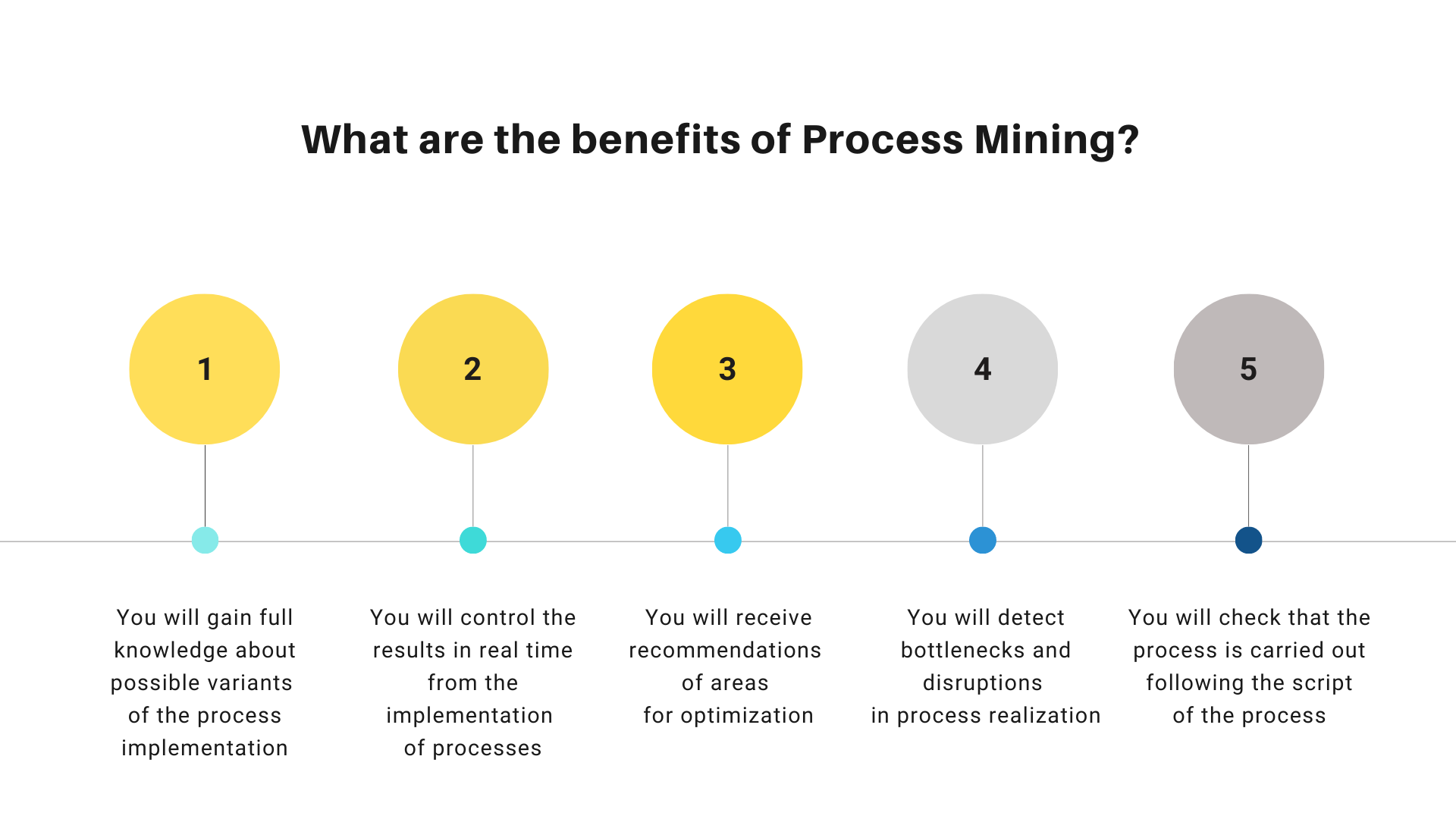How to identify errors in ongoing business processes
and optimize them automatically?
Daily office work is based on interaction with electronic data that comes from various IT systems. These can be databases, business software (e.g. accounting software or logistics software), document management systems, transaction logs, etc.
Processes generate a large amount of data - that are being processed in IT systems. Each action leaves a mark we call an event log. The events are recorded in chronological order and show the relationship between the processes.
Companies perform a process analysis based on such traces to assess their effectiveness and compliance with the target process model. It is called Process Mining.
Process Mining carries out process analysis and data mining using Artificial Intelligence and Machine Learning.
During Data Mining, the implementation of the process is verified based on the event log. The process flow recreation is monitored on an ongoing basis to detect bottlenecks and technical problems, i.e. exceptions to the process implementation. Process Mining suggests introducing changes at individual stages of process realization, e.g. adding a new entry point to the ongoing process or leaving an ineffective stage of the process.

Predictive process discovery in Process Mining
How to start Process Mining?
From discovering these processes - visualizing them and identifying strengths and weaknesses.
Data Mining is realised by using the AI/ML algorithm. Process models are created automatically from the event traces recorded in the event log. They indicate information about the possibility of accelerating the the process and about the possibility of the using new methods of handling the process. The aim is increasing the quality and efficiency of the services provided. Reviewing the current methods of process realization allows for the determination of probable occurrences and the estimated time of completion of the process.
What can Process Mining be used for?
e.g. to inform the client how long it may take to consider his complaint or when the client will most likely get the insurance benefit.
Process discovery
algorithms verify:
- Correct process recreation.
- Process implementation stages - assessment of their suitability.
- The time necessary to complete the process.
- Defective components in the process.
- Items which aren't included in the process scenario.
The new process realisation
model takes into account:
- Correct process realization scheme.
- Correctness of relations between processes.
- The expected efficiency level after the completion of the process.
- Optimization of process realization methods.
Process Mining - discovering inefficiencies in the IT systemin real-time
Process analysis becomes much more accurate and in-depth thanks to the use of Machine Learning (ML) and Artificial Intelligence (AI) algorithms. It identifies the ongoing processes and determines their efficiency, execution time and correctness of operation with the process handling scenario.
The result of Data Mining is the preparation of process diagrams with detailed statistics of their realization.
By detecting events deviating from the standard process realization, the AI/ML mechanism searches for their causes, which may be the lack of synchronization between the stages of the process or the lack of data to be processed. Process Mining pays attention to the security of the process realisation, compliance with the process scenario and effectiveness of the process.
Process Mining is increasingly used solution to analyze processes in order to extend them or modify
Process discovery aims to create a process delivery model that will be higher quality and completed in less time. Process Mining simulates processes to predict the results that will be obtained from introducing suggested process changes.
The AI/ML mechanism detects the ongoing processes and visualizes them, taking into account the achieved values, i.e.
- speed of action,
- achieving the goal of the process,
- the process performance achieved.
- how to shorten the process handling time,
- how to avoid mistakes,
- what areas require additional support.

Process Mining is oriented to the optimization of business processes
In summary, Process Mining is a method of continuous process management focused on the improvement and development of services.
It consists in monitoring the events taking place during the process realization and determining the most optimal stages and methods of the process.
The main goal of performing in-depth Data Mining is to speed up ongoing processes, increase customer satisfaction, avoid problems such as bottlenecks and better deal with repeated errors or data inaccessibility.
Keep up to date with the news about Digital Business Transformation
